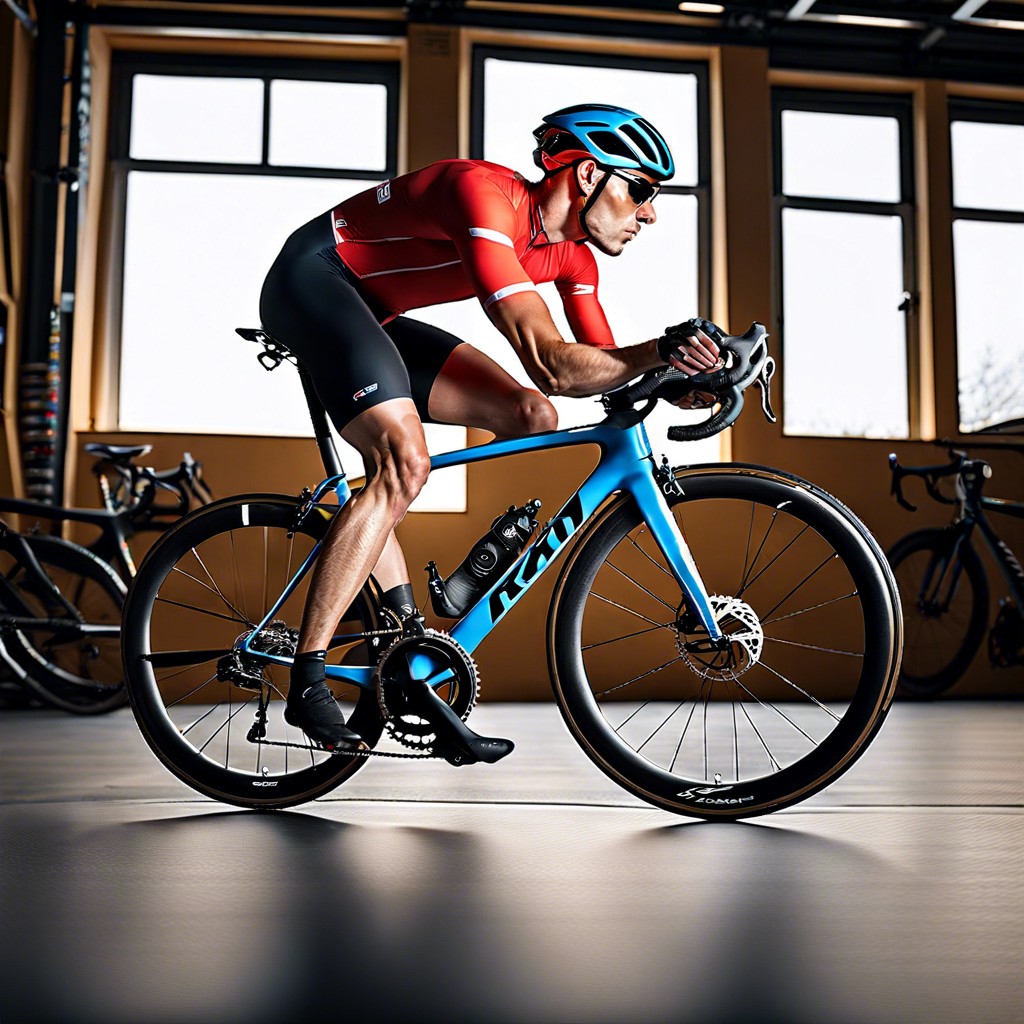This article provides a comprehensive guide to choosing the right road bike size for a comfortable and efficient cycling experience.
Key takeaways:
- Proper road bike sizing enhances comfort and performance.
- Inseam and height are key measurements for road bike sizing.
- Reach and stack dimensions affect bike handling and comfort.
- Professional bike fittings tailor the bike to your body and goals.
- Investing in a professional fitting ensures a better riding experience.
The Importance of Correct Road Bike Sizing

Getting the right fit on a road bike boosts comfort and optimizes performance. An improperly sized bike can lead to inefficient riding, increasing the risk of injury and fatigue. Cyclists should prioritize proper fit to enhance stability and bike handling, ensuring a better overall riding experience.
Correct sizing affects the ease of reaching the handlebars and pedals, which influences breathing and muscle engagement. This relationship is crucial for long rides where endurance and efficiency are paramount.
A well-sized bike also accommodates the rider’s flexibility, allowing for a suitable saddle position that supports the natural curvature of the spine. This consideration is particularly essential for avoiding lower back strain during prolonged cycling.
Ultimately, when the dimensions of the bike align with the rider’s body, the result is a synergy that can lead to more enjoyable and effective cycling.
Key Measurements for Road Bike Sizing
When selecting a road bike, two essential measurements will guide your choice: the inseam and height of the rider. Inseam length is the distance from your crotch to the ground; it’s crucial for determining the standover height of the bike, which is the clearance between the top tube and your body. A suitable clearance prevents accidents and ensures comfort.
Height is another key indicator. It’s typically aligned with the length of the bike’s top tube, which influences the reach to the handlebars and overall comfort while riding. Each bike manufacturer may have a slightly different sizing chart, so comparing your measurements to their specific chart is necessary.
Arm length and torso length also play a role, but they’re usually accounted for after establishing the basic frame size from inseam and height. These measurements will affect the stem length and handlebar position, refining the bike’s fit to the individual’s body proportions and riding style.
Adjustments can be made via the saddle height and position, as well as the handlebar height, but these rely on the initial frame size decision. Starting with a frame that’s close to your ideal size is paramount—minor tweaks can then be made to perfect the fit.
To summarize, focusing on inseam and height will streamline the selection process, paving the way for a more comfortable and efficient ride.
Determining the Right Road Bike Frame Size
The starting point for determining your road bike frame size is your height and inseam length. Manufacturers often provide size charts correlating rider height to frame size, typically measured in centimeters for road bikes.
A general rule suggests that the standover height (the distance from the ground to the top of the top tube) should allow for a couple of inches of clearance when you stand over the bike with both feet flat on the ground. However, personal comfort and riding style can affect this.
To find your inseam length, stand against a wall with a book wedged between your legs as if it were a bike seat, and measure from the top of the book straight down to the floor. This measurement helps to ascertain the correct frame size and seat post height, ensuring efficient pedaling and reducing the risk of injury.
Keep in mind that sizing can differ between bike models and manufacturers. It’s a useful benchmark, but a test ride is invaluable. During a test, consider whether the bike allows for a comfortable position without overextending to reach the handlebars and if it provides the ability to pedal without excessive knee flexion or extension.
The Significance of Reach and Stack in Road Bike Fit
Reach and stack are critical yet often overlooked dimensions that dictate how a road bike feels and handles.
Reach is the horizontal distance from the bottom bracket to the top-center of the head tube. It influences how stretched out you’ll be when riding, affecting your comfort and aerodynamics. A longer reach typically provides a more aggressive, aerodynamic position, suitable for racing or fast-paced riding.
Stack, on the other hand, is the vertical distance from the bottom bracket to the top-center of the head tube. It determines the bike’s handlebar height, impacting your riding posture and comfort, especially on longer rides. A higher stack results in a more upright position, which is beneficial for endurance cycling and those with lower back issues.
Balancing these two dimensions is essential because they both affect your ability to control the bike and the pressure distribution on your hands, seat, and feet. A professional fit can ensure the right combination of reach and stack for your individual body proportions and riding style.
Importance of Professional Bike Fittings
Professional bike fittings go beyond generic size charts to tailor the bike to your specific body measurements, riding style, and goals. This customization can prevent injuries and increase comfort and efficiency on the bike.
A trained fitter will assess your flexibility, strength, and riding posture. They consider factors such as saddle height, handlebar reach, and foot positioning, ensuring each touchpoint is optimized for you.
The process often involves dynamic testing, where the fitter observes you riding, often on a stationary setup, to accurately gauge bike-rider interaction. Adjustments may be made in real-time for immediate feedback.
Fittings are particularly useful for addressing particular issues such as persistent discomfort, past injuries, or performance bottlenecks. Even experienced cyclists benefit from regular fittings as their body and riding style evolve.
Professional fittings are an investment in your cycling future, leading to a more enjoyable and sustainable riding experience.